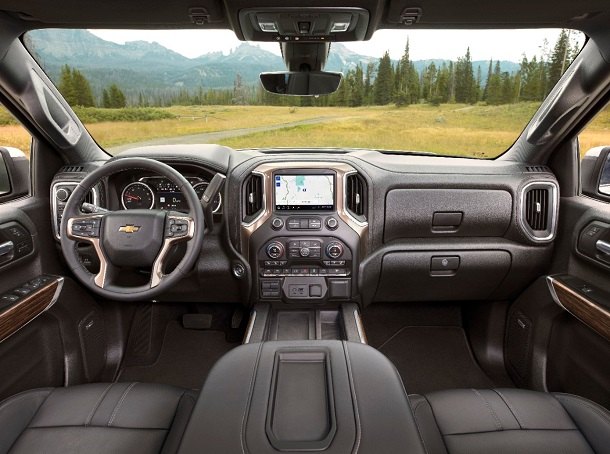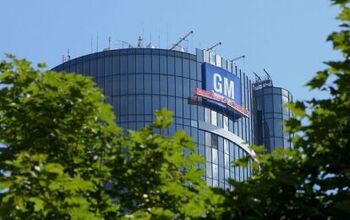This GM Plant Isn't Unhappy

General Motors’ Spring Hill, Tennessee assembly complex has reason not to worry about the automaker’s current round of cost-cutting and plant mothballing. There’s not a car in sight.
On Thursday, the General forked over another $22 million to facilitate production of a thriftier version of its revered 6.2-liter V8 truck engine, which brings total investment in Spring Hill to over $2 billion this decade alone.
Spring Hill added 6.2-liter V8s to its propulsion mix back in 2016, but this version of the mill adds Dynamic Fuel Management for increased fuel economy. Destined for GM’s Silverado/Sierra twins and full-size SUVs, the engine shuts off cylinders in 17 different patterns, depending on engine speed and load. Under certain conditions, said trucks can make headway on the strength of one cylinder.
DFM joins the automaker’s tech grab bag for 2019; 5.3-liter V8s see it, as well. If you’re curious about DFM’s method of operation, GM explains it here:
An electromechanical system deactivates and reactivates all 16 of the engine’s hydraulic valve lifters, controlling valve actuation. The system uses solenoids to deliver oil pressure to control ports in the lifters, which activate and deactivate the lifters’ latching mechanisms. When a cylinder is deactivated, the two-piece lifters effectively collapse on themselves to prevent them from opening the valves. When the cylinder is reactivated, solenoids send an oil pressure signal to the control ports on the lifters and the latching mechanism restores normal function, allowing the valves to open and close.
Vehicles rolling out of Spring Hill, once home to the Saturn lineup, include the GMC Acadia and Cadillac XT5, but 2019 brings a new occupant. Funded by a $300 million cash dump, Cadillac’s edgy-in-the-front, bland-as-hell-in-the-back XT6 crossover goes into production later this year, filling a glaring gap in the brand’s lineup. That vehicle should add a further 200 jobs to the plant, which currently employs about 3,800 workers.
Is there a better recipe for job security than big truck engines and midsize crossovers?
While it’s high times at Spring Hill, other North American plants can’t say the same. Late last year, the automaker announced it would cut off the flow of product heading to Detroit-Hamtramck, Lordstown, and Canada’s Oshawa Assembly. Two transmission facilities in Michigan and Maryland also stand to close in 2019.
Oshawa’s closure looks like a done deal, but the fate of the company’s Detroit and Ohio facilities hinge on UAW contract negotiations taking place this summer.
[Images: General Motors]

More by Steph Willems
Latest Car Reviews
Read moreLatest Product Reviews
Read moreRecent Comments
- Lichtronamo Watch as the non-us based automakers shift more production to Mexico in the future.
- 28-Cars-Later " Electrek recently dug around in Tesla’s online parts catalog and found that the windshield costs a whopping $1,900 to replace.To be fair, that’s around what a Mercedes S-Class or Rivian windshield costs, but the Tesla’s glass is unique because of its shape. It’s also worth noting that most insurance plans have glass replacement options that can make the repair a low- or zero-cost issue. "Now I understand why my insurance is so high despite no claims for years and about 7,500 annual miles between three cars.
- AMcA My theory is that that when the Big 3 gave away the store to the UAW in the last contract, there was a side deal in which the UAW promised to go after the non-organized transplant plants. Even the UAW understands that if the wage differential gets too high it's gonna kill the golden goose.
- MKizzy Why else does range matter? Because in the EV advocate's dream scenario of a post-ICE future, the average multi-car household will find itself with more EVs in their garages and driveways than places to plug them in or the capacity to charge then all at once without significant electrical upgrades. Unless each vehicle has enough range to allow for multiple days without plugging in, fighting over charging access in multi-EV households will be right up there with finances for causes of domestic strife.
- 28-Cars-Later WSJ blurb in Think or Swim:Workers at Volkswagen's Tennessee factory voted to join the United Auto Workers, marking a historic win for the 89- year-old union that is seeking to expand where it has struggled before, with foreign-owned factories in the South.The vote is a breakthrough for the UAW, whose membership has shrunk by about three-quarters since the 1970s, to less than 400,000 workers last year.UAW leaders have hitched their growth ambitions to organizing nonunion auto factories, many of which are in southern states where the Detroit-based labor group has failed several times and antiunion sentiment abounds."People are ready for change," said Kelcey Smith, 48, who has worked in the VW plant's paint shop for about a year, after leaving his job at an Amazon.com warehouse in town. "We look forward to making history and bringing change throughout the entire South." ...Start the clock on a Chattanooga shutdown.


































Comments
Join the conversation
Wow, that is one cheap looking interior.
I would not be surprised if there is a tune available soon from most of the aftermarket tuners that disables AFM variants on these trucks. I know that I'd buy it!